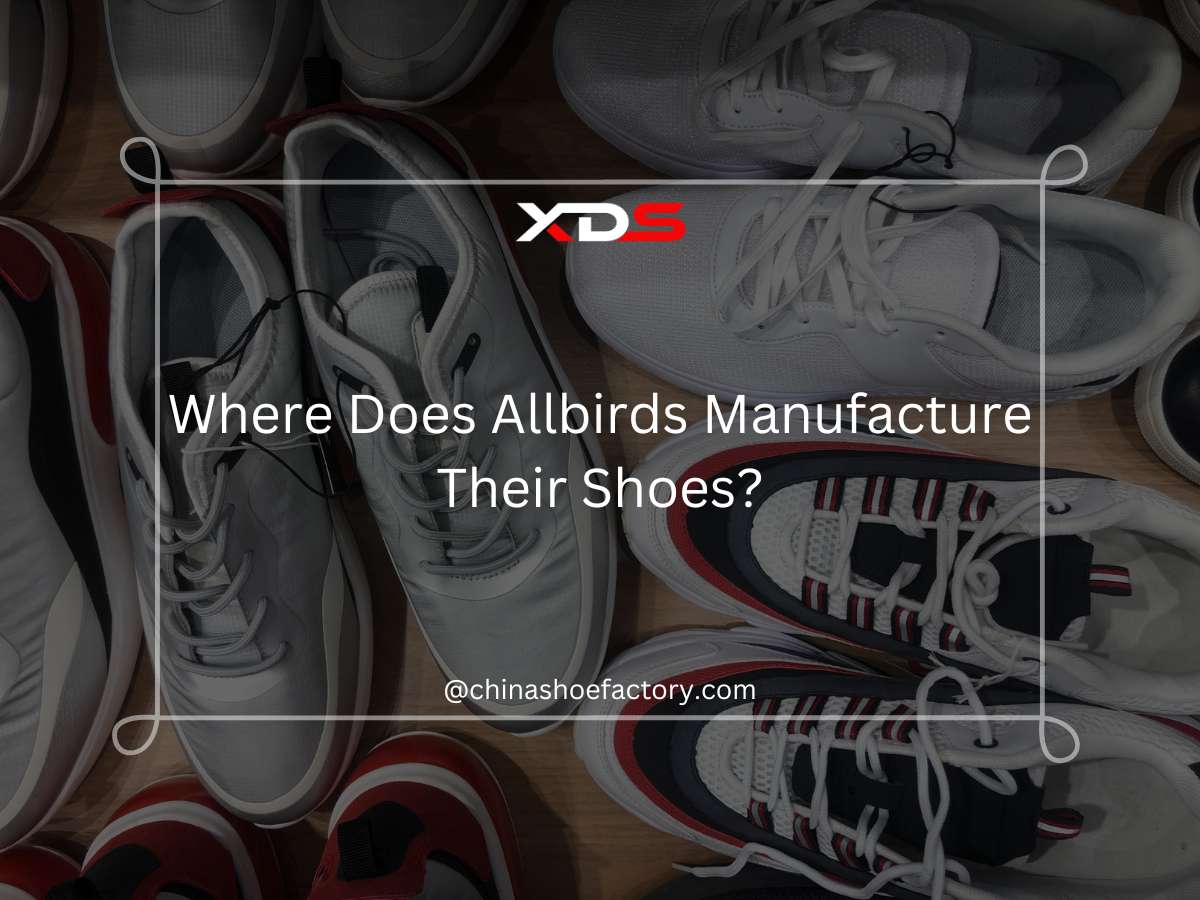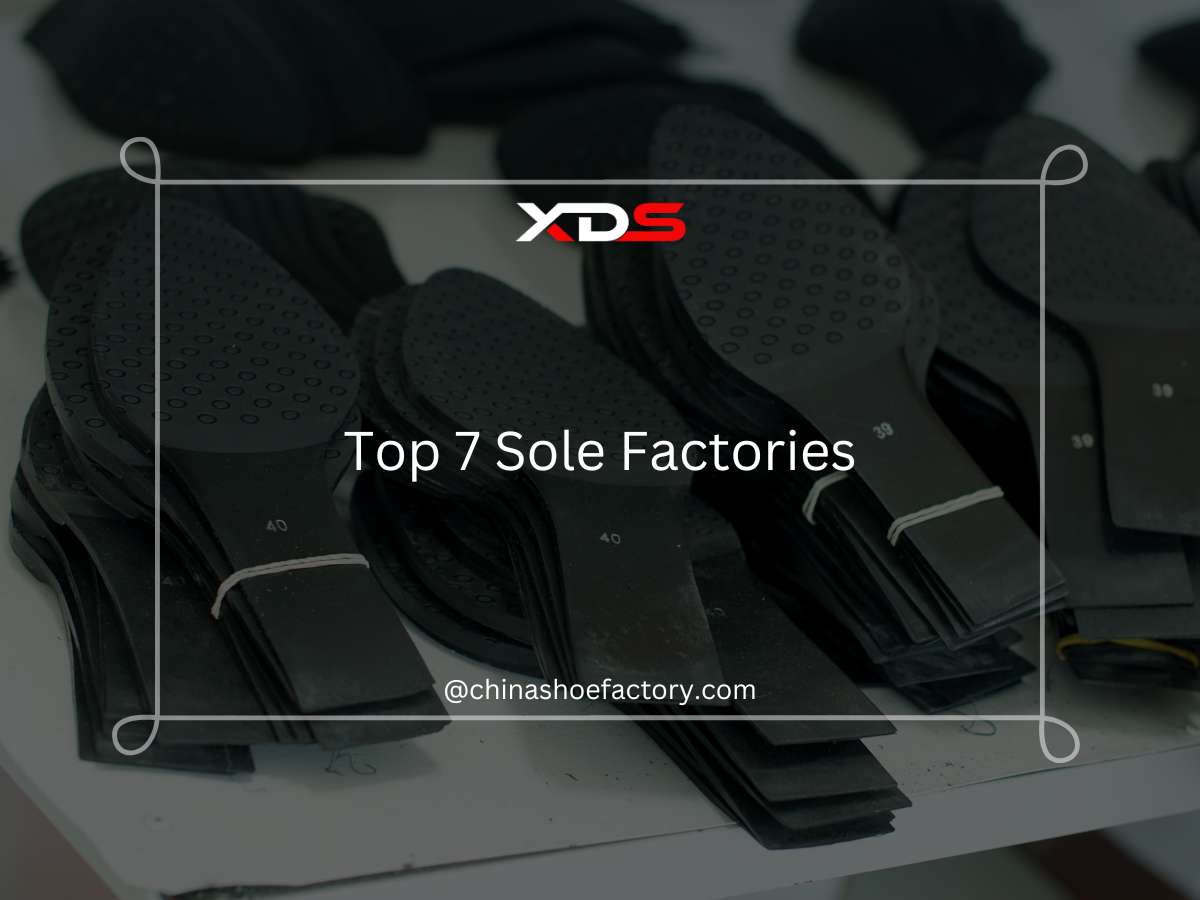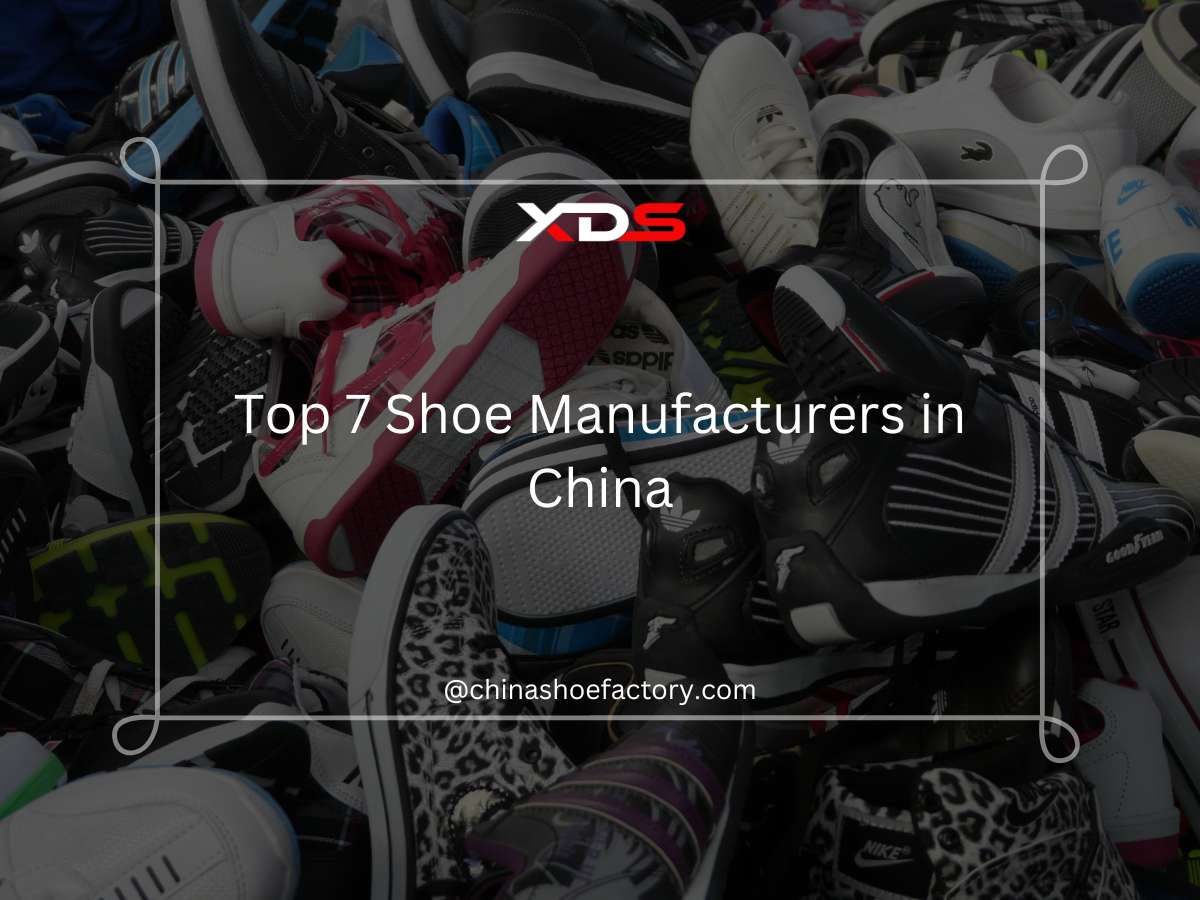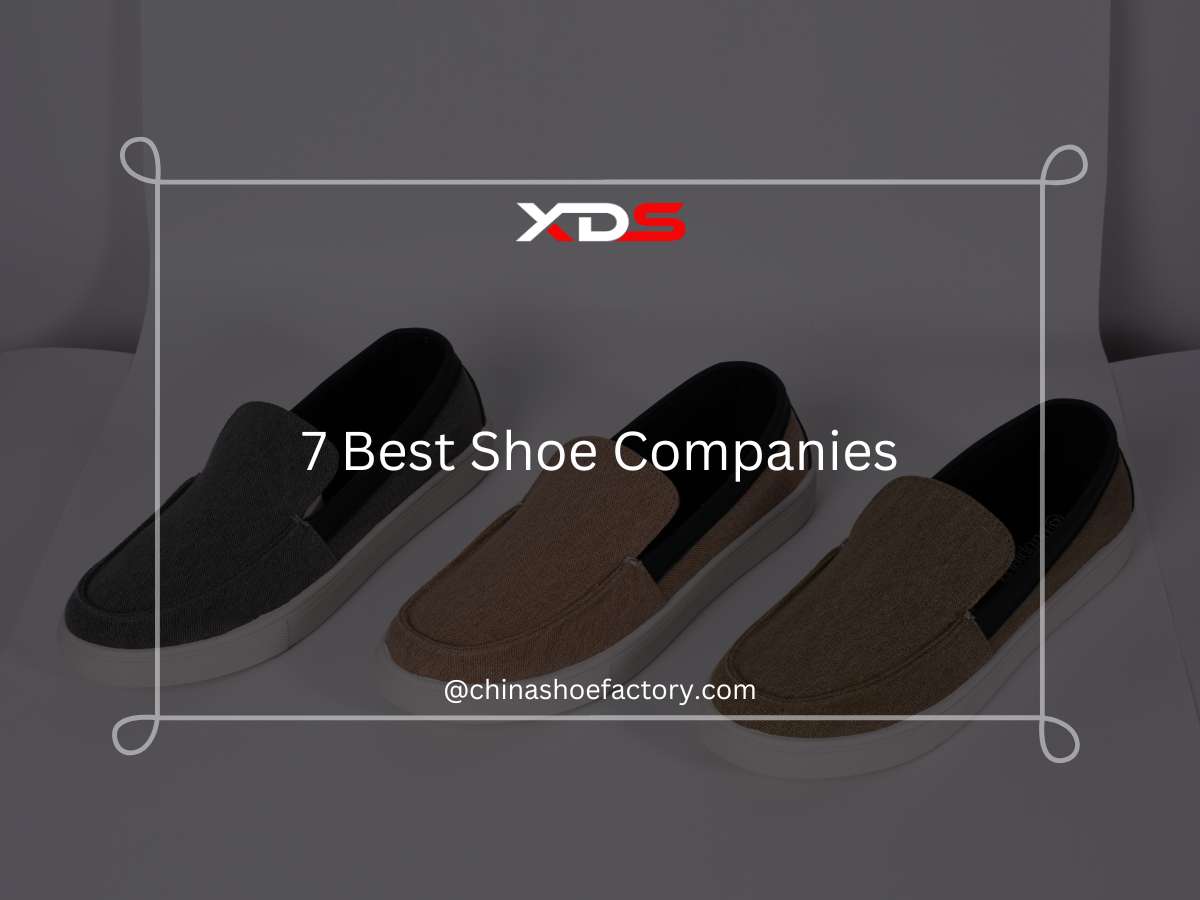13 Best Upper Materials for Sports Shoes

Author: Andy Hong | Founder at XDS
Hi, I'm Andy Hong, here to share my expertise in footwear manufacturing with you.
13 Best Upper Materials for Sports Shoes
Table of Contents
Are you searching for the ideal material to create durable sports shoes? Finding the right upper material can elevate the performance and appeal of your footwear, offering breathability, comfort, and style.
As a material scientist, I’ve spent years analyzing footwear materials, ensuring that every component meets industry standards while enhancing user experience.
Here are the first 2 materials on the list:
- Mesh
- Knit Fabric
In this guide, you’ll discover why these materials are preferred for sports shoes and how they contribute to comfort and performance.
Keep reading to learn more!
1. Quick Comparison Chart
The choice of upper material plays a critical role in the performance, durability, and comfort of sports shoes. Each material offers unique features tailored to specific activities and environments. The table below provides a glance at their key features and benefits, helping you identify the perfect option before exploring each material in greater detail;
| Material | Key Features | Primary Benefits | Best For |
| Mesh | Lightweight, breathable | Keeps feet cool and reduces weight | Running and training shoes |
| Knit Fabric | Flexible, sock-like fit | Adapts to foot shape and enhances comfort | Dynamic sports activities |
| Synthetic Leather | Durable, water-resistant | Resists wear and lowers maintenance needs | Outdoor and casual shoes |
| Genuine Leather | Premium look, molds to foot | Lasts long and improves aesthetic appeal | High-end sports shoes |
| TPU | Flexible, impact-absorbing | Boosts energy return and resists abrasion | High-performance footwear |
| Engineered Mesh | Customized density, breathable | Provides targeted support and increases airflow | High-performance running shoes |
| Canvas | Natural, customizable | Low-cost and eco-friendly options | Casual and streetwear shoes |
| Neoprene | Elastic, water-resistant | Protects from wet conditions and adds flexibility | Water sports and outdoor shoes |
| Ripstop Nylon | Tear-resistant, lightweight | Withstands rough use and reduces material damage | Hiking and adventure footwear |
| Flyknit/Primeknit | Seamless, form-fitting | Minimizes bulk and boosts flexibility | High-performance athletic shoes |
| PU-Coated Textiles | Water-repellent, easy to dye | Enhances weather protection and customization | All-weather sports shoes |
| High-Performance Fabrics | Strong, puncture-resistant | Increases durability and protects feet | Industrial and rugged footwear |
| Open-Cell Foam | Cushioned, breathable | Adds comfort and regulates temperature | Prolonged use and active shoes |
2. Mesh
Mesh materials are widely used in sports shoe uppers due to their lightweight and breathable qualities. They are available in various types, each offering unique properties to enhance comfort and performance. At XDS, we specialize in crafting mesh uppers to meet the functional needs of our customers. Here are some types and benefits of mesh materials:
Types
- Woven Mesh: Woven mesh is made from tightly interlaced threads, offering excellent strength and durability. This material is ideal for areas requiring high wear resistance while maintaining breathability.
- Knitted Mesh: Knitted mesh features a looser structure, making it softer and more flexible. It provides enhanced stretchability, which is perfect for achieving a snug and adaptive fit.
- Coated Mesh: Coated mesh has a protective layer applied to improve water resistance. This type is often used in sports shoes designed for outdoor or wet conditions.
- Engineered Mesh; Engineered mesh is specifically designed with varying densities for targeted support and ventilation. It offers a balance of structure and airflow, ideal for high-performance activities.
Benefits
- Reduces Sweat: Mesh materials allow air to circulate, keeping feet cool and dry. For example, this design helps reduce sweat buildup and enhances comfort, particularly during intense physical activities.
- Lightweight Design: Mesh is incredibly lightweight, reducing the overall weight of the shoe. This feature helps enhance agility and reduces fatigue for the wearer.
- Water Resistance: Mesh can be engineered to meet specific performance needs, such as stretch or water resistance. This versatility makes it a preferred choice for various sports shoe designs.
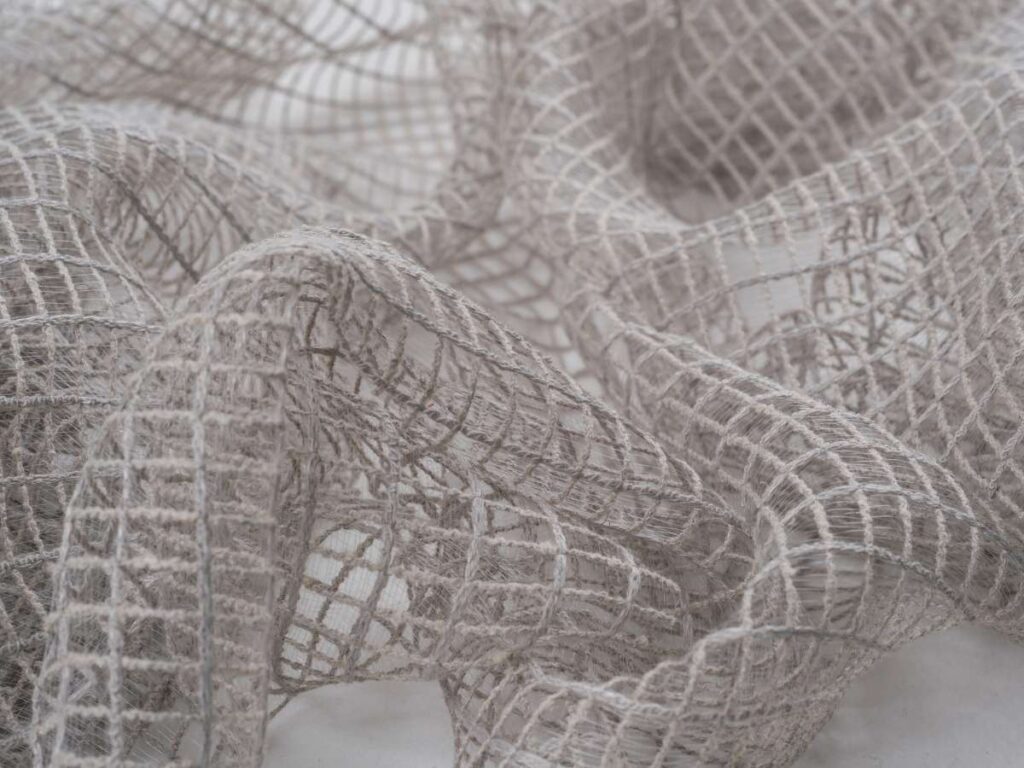
3. Knit Fabric
Knit fabric is an adaptable material commonly used in sports shoe uppers. Made from interlocking loops of yarn, it is valued for its ability to provide both comfort and durability. Now, let’s explore some types and unique advantages of knit fabric:
Types
- Circular Knit: Produced using circular knitting machines, this fabric features a seamless design. It eliminates weak points, offering a more reliable upper for long-term use.
- Warp Knit: Warp knit is crafted with parallel yarns to create a stable and structured fabric. It maintains its form even after prolonged wear and heavy use.
- Flat Knit: Flat knit is made on flatbed machines, allowing precise and targeted designs. This type of fabric enhances specific areas of the shoe for better performance.
- Engineered Knit: Engineered knit includes variations in density for tailored support and flexibility. It balances strength and adaptability for dynamic movement.
Benefits
- Reduces Energy Loss: Knit fabric provides a sock-like fit, minimizing movement within the shoe. For example, this snug fit helps athletes conserve energy and maintain stability during high-impact activities.
- Increases Breathability: The interlocking structure promotes airflow, reducing heat buildup. This helps maintain a cool and dry environment for the feet.
- Improves Flexibility: .The fabric stretches naturally, allowing for better adaptability during motion. This enhances comfort while supporting a range of movements.
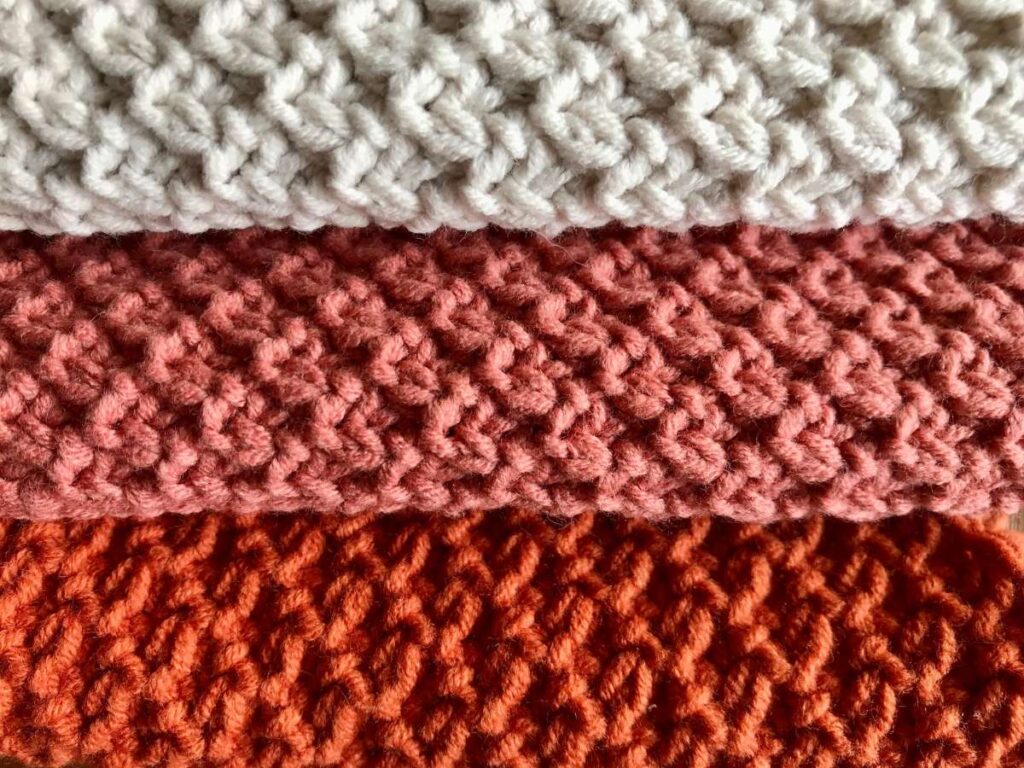
4. Synthetic Leather
Synthetic leather is a popular material for sports shoe uppers, offering the look of genuine leather with added durability and flexibility. It is made from a combination of plastics and fabrics, providing a lightweight and cost-effective alternative to traditional leather. Let’s delve into some types and benefits of synthetic leather:
Types
- PU Leather: PU leather is made using polyurethane coating, which gives it a soft and flexible texture. This type is lightweight and provides an affordable option for stylish designs.
- PVC Leather: PVC leather incorporates polyvinyl chloride, making it water-resistant and easy to clean. It is ideal for shoes used in outdoor or wet conditions.
- Microfiber Leather: Microfiber leather is crafted from ultrafine synthetic fibers, offering excellent breathability and strength. It combines the look of leather with advanced performance features.
- Recycled Leather: This type is created by blending leather scraps with synthetic materials. It offers a sustainable option for brands prioritizing eco-friendly designs.
Benefits
- Reduces Costs: Synthetic leather is more affordable than genuine leather, helping businesses reduce production expenses. This allows for competitive pricing without compromising quality.
- Increases Product Lifespan: Its resistance to wear and tear ensures that shoes remain intact for longer periods. This benefits both manufacturers and end-users by reducing replacement needs.
- Supports Sustainability Goals: Recycled synthetic leather helps repurpose waste materials, minimizing landfill contributions. This eco-conscious choice appeals to brands focused on sustainable production.
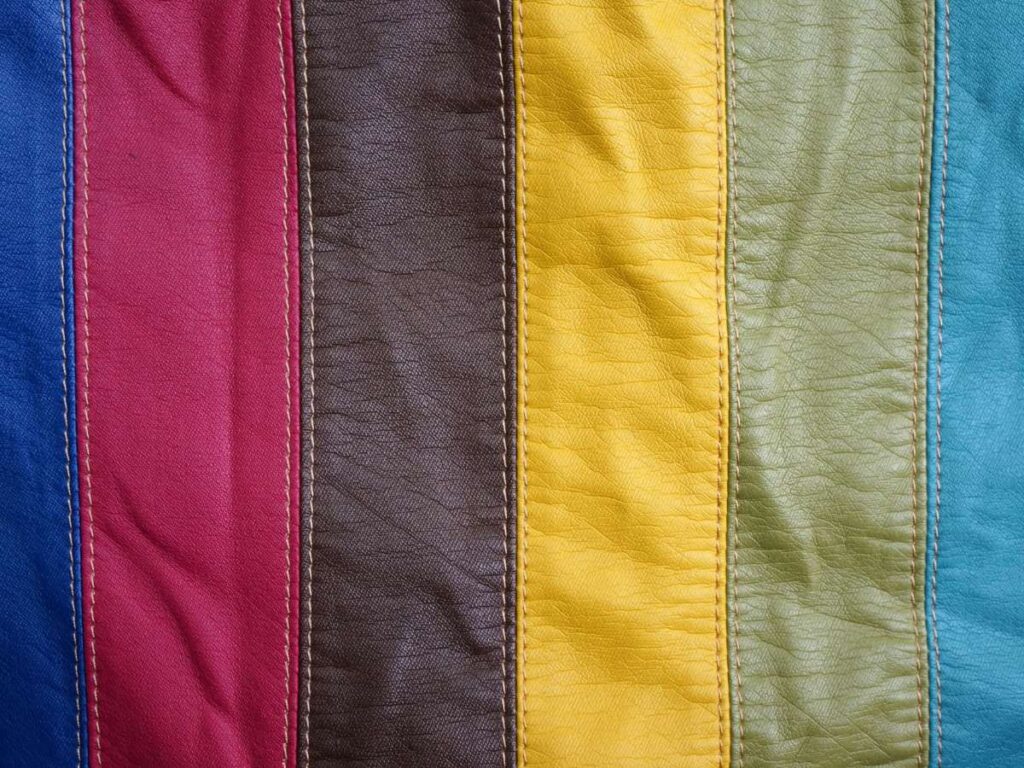
5. Genuine Leather
Genuine leather is a classic material made from processed animal hides, offering unmatched durability and a premium look. Its ability to age beautifully over time makes it a preferred choice for high-end sports shoe uppers. Here are the types and benefits of genuine leather:
Types
- Full-Grain Leather: Full-grain leather is the strongest and most durable type of leather. It maintains the natural texture and resists wear, making it ideal for long-lasting products.
- Top-Grain Leather: Top-grain leather is sanded and treated for a smoother finish. This type is often used for stylish designs without compromising strength.
- Split Leather: Split leather is made from the lower layer of the hide, providing a soft and flexible option. It is commonly used in shoes where comfort is a priority.
- Nubuck Leather: Nubuck leather is lightly sanded to create a soft, velvety texture. It is both durable and aesthetically appealing, ideal for casual and outdoor styles.
Benefits
- Extended Use: Genuine leather retains its strength and quality over extended use, making it a reliable choice for high-performing shoes. This helps businesses deliver products that last longer in demanding conditions.
- Reduces Odor: Leather’s natural properties help minimize odor buildup by allowing moisture to escape. This keeps the shoes fresher for longer periods.
- Adds Premium Value: The natural texture and appeal of genuine leather enhance the overall look of footwear. This allows businesses to position their products as high-quality and upscale offerings.
6. Thermoplastic Polyurethane (TPU)
Thermoplastic Polyurethane (TPU) is a versatile material commonly used for sports shoe uppers due to its flexibility and durability. It offers a lightweight option that withstands heavy use, making it a reliable choice for performance footwear. Let’s explore the types and benefits of TPU materials:
Types
- Soft TPU: Soft TPU provides excellent flexibility and stretch. This type is often used in areas requiring a snug fit and enhanced comfort.
- Rigid TPU: Rigid TPU is tougher and offers more structure, ideal for reinforcing high-stress areas of the shoe. It improves stability while maintaining lightweight properties.
- Recycled TPU: Recycled TPU is made from repurposed materials, offering an eco-friendly solution. This type reduces waste without compromising quality or performance.
- Coated TPU: Coated TPU is treated to enhance water and stain resistance. It is a great choice for outdoor and all-weather sports shoes.
Benefits
- Improves Abrasion Resistance: TPU is highly resistant to scratches and wear, extending the life of the shoe. This is particularly useful for footwear designed for rugged activities.
- Increases Performance : The material absorbs impact and provides rebound, improving performance during high-intensity activities. This makes it ideal for sports applications.
- Reduces Weight: TPU is lightweight compared to other structural materials. This helps businesses create shoes that are both durable and easy to wear.
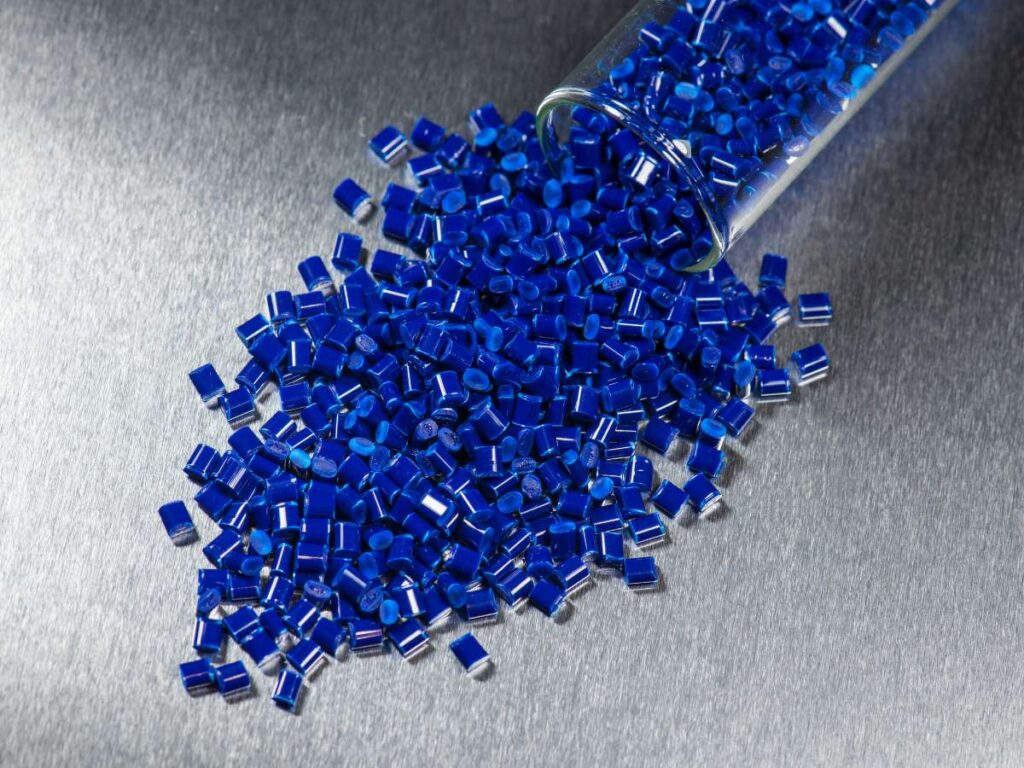
7. Engineered Mesh
Engineered mesh is a specially designed material created to optimize performance in sports shoes. By varying the density and pattern, it delivers targeted support, flexibility, and breathability, making it ideal for high-performance footwear. Let’s examine the types and benefits of engineered mesh:
Types
- Multi-Layer Mesh: Multi-layer mesh combines different layers for added strength and durability. This is ideal for shoes that need extra support without compromising flexibility.
- Zonal Mesh: Zonal mesh is customized to provide varying support in different areas. It delivers flexibility where needed and rigidity in high-stress zones for a balanced design.
- Micro-Engineered Mesh: Micro-engineered mesh uses smaller, tightly woven patterns for superior precision. It is often used in shoes that require a snug fit and enhanced stability.
- Elastic Mesh: Elastic mesh stretches and returns to its original form, offering dynamic movement support. This type is ideal for shoes made for fast-paced activities.
Benefits
- Increases Ventilation: Engineered mesh promotes airflow by strategically placing breathable areas. This keeps feet cool and reduces discomfort during long activities.
- Enhances Targeted Support: The material’s varying densities provide tailored support in key areas. This helps improve overall performance by focusing strength where it is needed most.
- Minimizes Waste: By using advanced production techniques, engineered mesh minimizes waste. This is a cost-efficient and eco-friendly option for manufacturers.
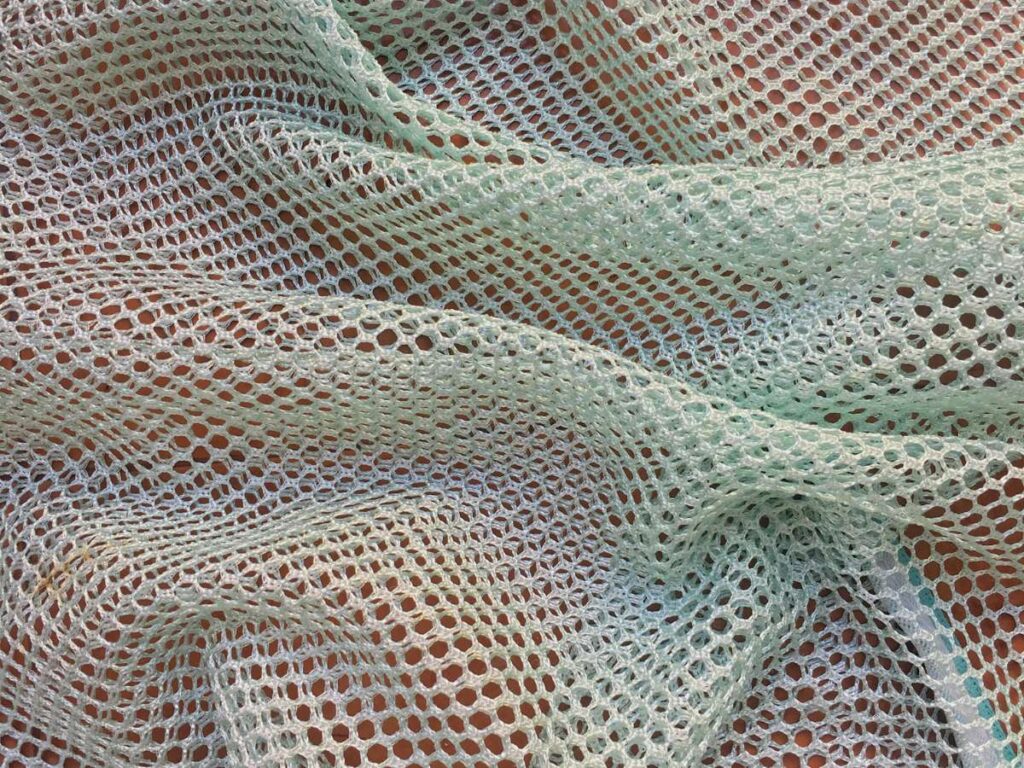
8. Canvas
Canvas is a durable and versatile material often used in sports shoe uppers. Made from woven cotton or synthetic fibers, it provides a lightweight and breathable option that is easy to customize for various designs. Let’s look at the types and benefits of canvas:
Types
- Cotton Canvas: Cotton canvas is made from natural fibers, offering a soft and breathable feel. It is ideal for casual sports shoes that prioritize comfort.
- Synthetic Canvas: Synthetic canvas is crafted from man-made fibers, making it stronger and more resistant to wear. This type is often used for outdoor and high-performance footwear.
- Blended Canvas: Blended canvas combines cotton and synthetic fibers for a balance of durability and comfort. It is versatile and suitable for various sports shoe styles.
- Waxed Canvas: Waxed canvas has a water-resistant coating, making it suitable for wet conditions. This type is commonly used in shoes designed for outdoor activities.
Benefits
- Low Costs: Canvas is an affordable material, helping businesses manage manufacturing expenses. This makes it a practical choice for creating budget-friendly footwear.
- Heat Resistance: Canvas withstands high temperatures better than many synthetic materials. This makes it suitable for regions with warm climates or outdoor activities.
- Eco-Friendly Appeal: With options like recycled canvas, this material supports sustainability goals. It is a great choice for brands looking to minimize their environmental impact.
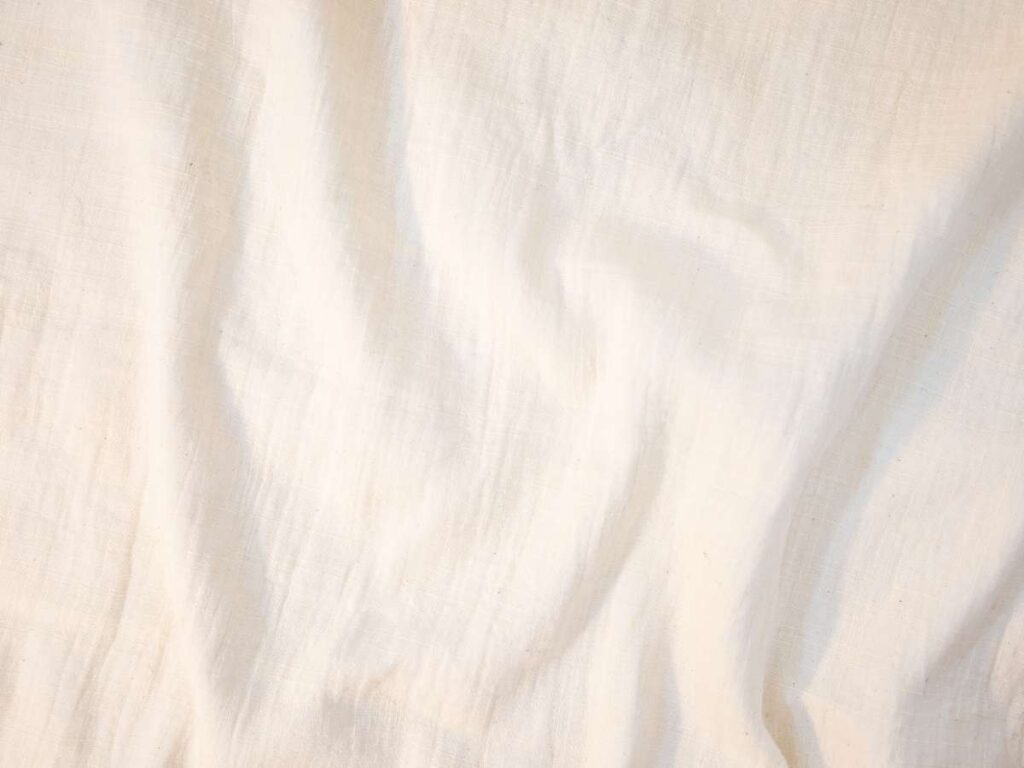
9. Neoprene
Neoprene is a synthetic rubber material widely used in sports shoe uppers for its flexibility and resistance to environmental elements. It provides excellent cushioning and protection, making it suitable for various outdoor and athletic applications. At XDS, we utilize neoprene in our manufacturing process to deliver durable, high-performance footwear tailored to meet diverse needs. Now, consider the types and benefits of neoprene:
Types
- Standard Neoprene: Standard neoprene offers a good balance of flexibility and durability. It is ideal for general-purpose sports shoes requiring reliable performance.
- Perforated Neoprene: This type includes tiny holes for enhanced breathability. It helps maintain comfort during extended wear by allowing air circulation.
- Laminated Neoprene: Laminated neoprene combines neoprene with fabrics for added strength. This type is often used in designs requiring more structure and durability.
- Recycled Neoprene: Recycled neoprene is created from repurposed rubber materials, offering an eco-friendly option. It supports sustainability goals while maintaining high-quality performance.
Benefits
- Blocks Moisture Intrusion: Neoprene’s water-resistant properties help keep the shoe dry and comfortable. This feature makes it a great choice for wet conditions.
- Shock Absorption: The material’s cushioning ability minimizes the impact of steps during movement. This enhances comfort for high-impact activities.
- Regulates Temperature: Neoprene retains warmth in cold weather while insulating against heat. This versatility makes it suitable for various climates and activities.

10. Ripstop Nylon
Ripstop nylon is a lightweight and durable material designed to resist tearing and ripping. Its woven structure includes reinforced threads, making it a dependable choice for sports shoe uppers, especially for outdoor and high-performance footwear. Now, let’s examine the types and benefits of ripstop nylon:
Types
- Polyester Ripstop: Polyester ripstop offers excellent strength and moisture resistance. It is ideal for shoes designed for wet or humid environments.
- Nylon Ripstop: Nylon ripstop is lightweight and flexible, making it suitable for active footwear. It provides durability without adding extra weight.
- Coated Ripstop: Coated ripstop has an additional waterproof layer applied. This type is perfect for shoes meant for outdoor activities in challenging weather.
- Colored Ripstop: Colored ripstop is dyed in vibrant hues while retaining its durability. It allows for creative designs in sports footwear.
Benefits
- Enhances UV Resistance: Ripstop nylon can be treated to resist UV rays, protecting the shoe from sun damage. This makes it suitable for prolonged outdoor use.
- Simplifies Cleaning: Ripstop nylon’s smooth surface repels dirt and stains, making it easy to clean and maintain. This reduces long-term upkeep for users and businesses.
- Boosts Color Retention: The fabric holds dyes exceptionally well, keeping vibrant colors intact over time. This enhances the visual appeal of sports shoes even with extended use.
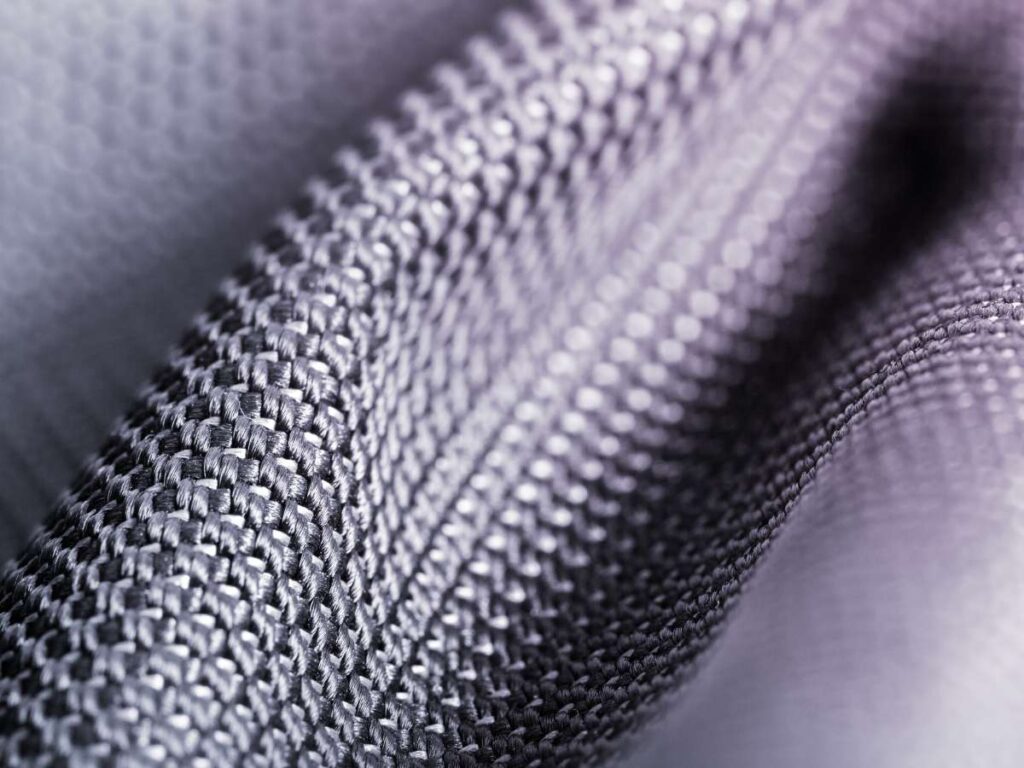
11. Flyknit or Primeknit Technology
Flyknit and Primeknit technologies are advanced knitting methods used to create seamless and flexible shoe uppers. These techniques integrate performance, comfort, and sustainability, making them ideal for high-performance sports shoes. Let’s take a closer look at the types and benefits of Flyknit and Primeknit technology:
Types
- Standard Knit: Standard knit uses uniform patterns for a balanced combination of flexibility and support. It’s suitable for general sports shoes requiring consistent performance.
- Zonal Knit: Zonal knit incorporates varied densities in different areas of the shoe. It provides targeted support and breathability where needed.
- Stretch Knit: Stretch knit offers enhanced elasticity, adapting to foot movements for added comfort. This is ideal for dynamic sports requiring flexibility.
- Recycled Knit: Recycled knit utilizes repurposed yarns to create eco-friendly uppers. It helps brands meet sustainability goals without compromising quality.
Benefits
- Reduces Seam-Related Discomfort: The seamless design eliminates pressure points caused by traditional stitching. This results in a smoother and more comfortable wearing experience.
- Supports Customization: Knitting technology allows for unique patterns and designs tailored to specific brand needs. This helps businesses stand out in a competitive market.
- Enhances Stretch Recovery: The material returns to its original shape after stretching, maintaining the shoe’s fit and appearance over time. This feature is especially beneficial for high-intensity sports shoes.
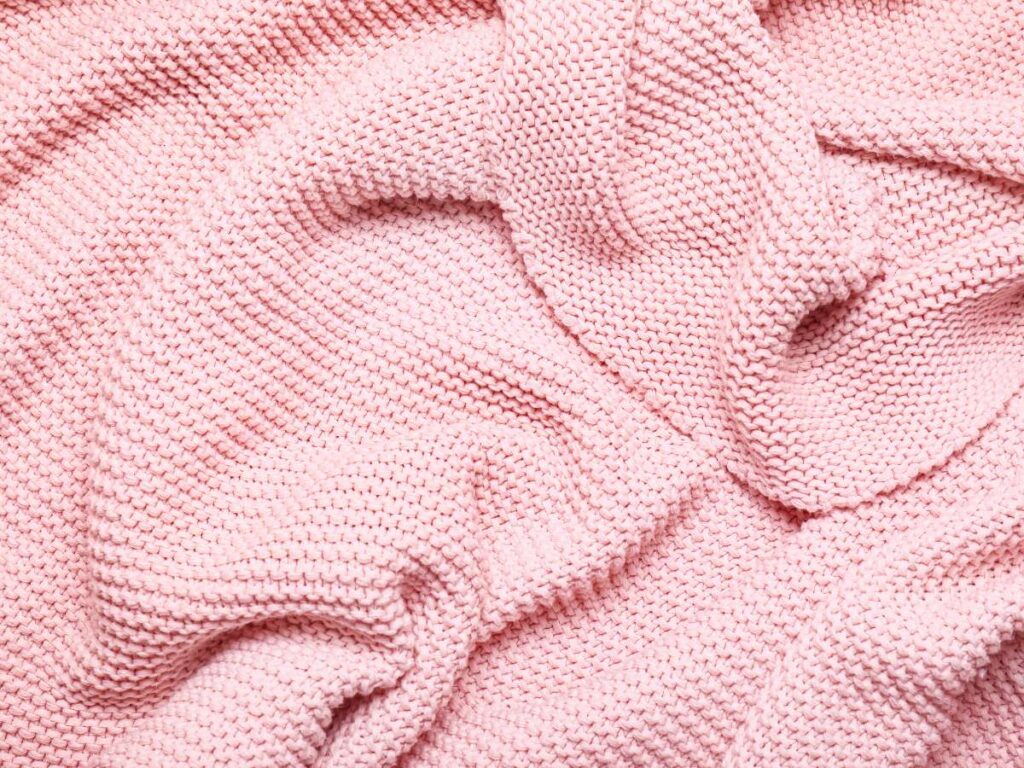
12. PU-Coated Textiles
PU-coated textiles are fabrics treated with a polyurethane coating to enhance their strength, flexibility, and resistance to water. This material is commonly used in sports shoe uppers, offering a practical balance of durability and performance for various environments. Here is a closer look at the types and benefits of PU-coated textiles:
Types
- Single-Layer Coated: This type features a single layer of polyurethane for basic water resistance. It is lightweight and suitable for general-purpose sports shoes.
- Double-Layer Coated: Double-layer coated textiles provide added durability and resistance to tearing. They are often used in shoes designed for rough terrains or heavy use.
- Breathable Coated Fabric: Breathable PU-coated textiles incorporate micropores that allow airflow while maintaining water resistance. These are ideal for shoes requiring comfort in warm conditions.
- Glossy Coated Fabric: This type has a shiny finish, offering a sleek and stylish appearance. It combines aesthetics with functionality for urban sports shoe designs.
Benefits
- Chemical Resistance: The polyurethane coating protects the fabric from exposure to chemicals and oils. This makes it suitable for shoes used in industrial or rugged environments.
- Provides UV Protection: PU-coated textiles can be treated to resist UV damage, preventing fading and degradation when exposed to sunlight. This is ideal for outdoor sports shoes.
- Improves Stain Resistance: The coating creates a barrier that makes the fabric resistant to stains. This keeps the shoes looking cleaner for longer, reducing maintenance needs.
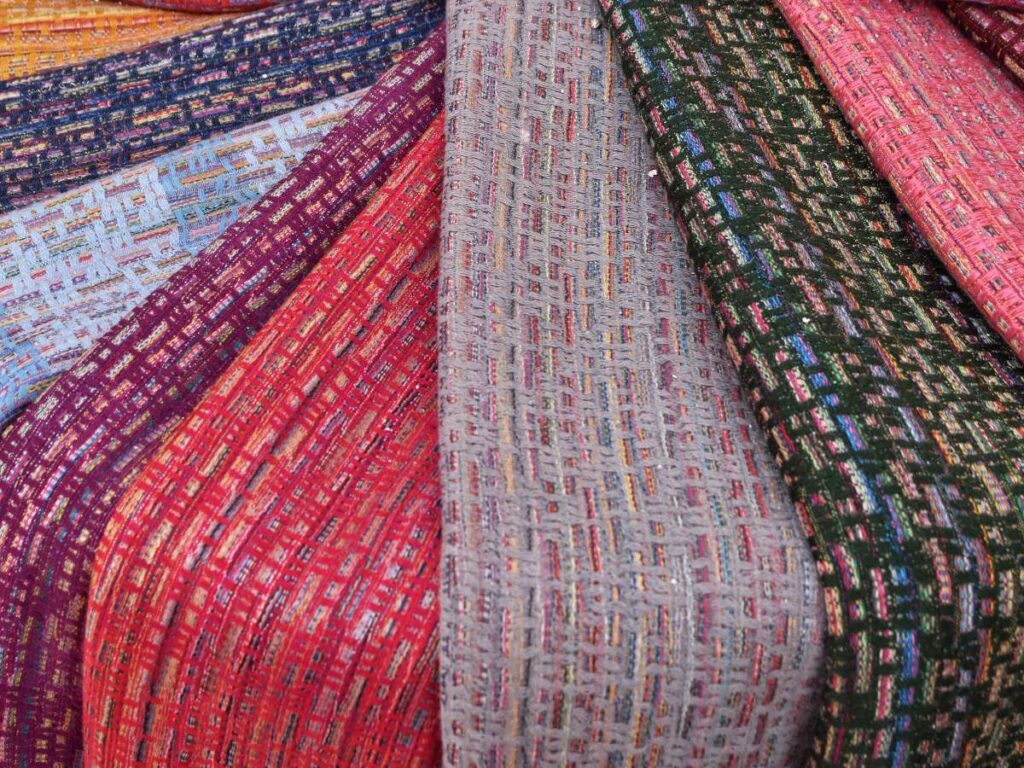
13. Kevlar or Other High-Performance Fabrics
Kevlar and similar high-performance fabrics are known for their exceptional strength, durability, and lightweight properties. These materials are widely used in sports shoe uppers for activities requiring toughness and protection without adding bulk. Here’s an overview of the types and benefits of Kevlar and high-performance fabrics:
Types
- Stretchable Kevlar: Stretchable Kevlar provides added flexibility while retaining durability. This type is ideal for shoes requiring a combination of movement and protection.
- Coated Kevlar: Coated Kevlar is treated to enhance its water and stain resistance. It is a great choice for shoes used in wet or challenging environments.
- Blended High-Performance Fabrics: Blends combine Kevlar with other fibers for improved versatility. This allows for better customization of properties like weight, breathability, or appearance.
- Reinforced High-Performance MeshL This type integrates high-strength fibers into a breathable mesh. It balances durability with ventilation for high-impact sports.
Benefits
- Enhances Puncture Resistance: Kevlar and similar fabrics prevent sharp objects from penetrating the shoe. This is critical for outdoor or industrial footwear.
- Reduces Material Fatigue: These fabrics maintain their strength and flexibility even after repeated stress. This helps shoes last longer in demanding conditions.
- Reduces Injury Risk: Kevlar’s ability to resist punctures and abrasions helps protect the foot from external hazards. This is especially valuable for outdoor and industrial applications.
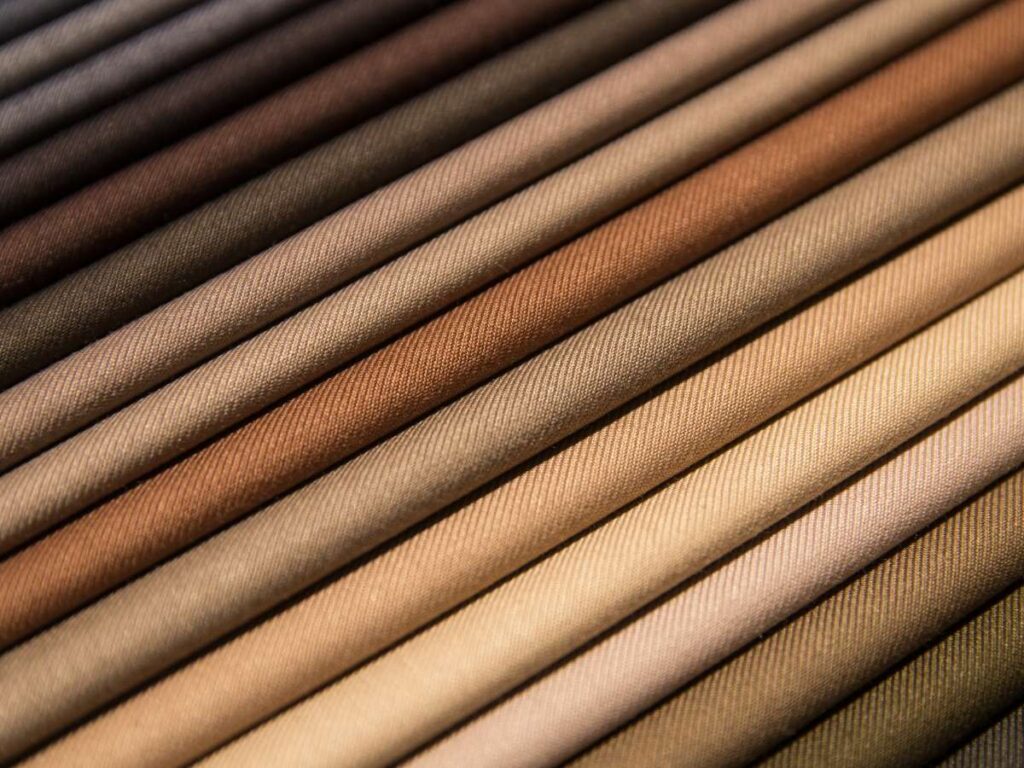
14. Open-Cell Foam
Open-cell foam is a lightweight and breathable material commonly used in sports shoe uppers for cushioning and comfort. Its porous structure promotes airflow, making it a preferred choice for footwear designed for prolonged activities. Here’s a detailed look at the types and benefits of open-cell foam:
Types
- Standard Foam: Standard open-cell foam provides basic cushioning and breathability. It is commonly used in casual sports shoes for everyday comfort.
- Memory Foam: Memory foam adapts to the shape of the foot, offering personalized comfort. This type is ideal for shoes requiring added support and reduced pressure points.
- Moisture-Wicking Foam: This foam includes moisture-wicking properties that help keep feet dry. It is perfect for active footwear used in warm or humid environments.
- Reinforced Foam: Reinforced open-cell foam combines flexibility with added strength for durability. It works well in shoes designed for heavy use or intense activities.
Benefits
- Improves Energy Return: The foam’s elastic structure helps bounce back after compression, aiding in efficient energy transfer during physical activities.
- Prevents Blister Formation: By providing a soft and adaptive surface, open-cell foam reduces friction, lowering the risk of blisters and other skin irritations.
- Reduces Impact Noise: The cushioning properties of open-cell foam absorb sound during movement, making shoes quieter when walking or running.
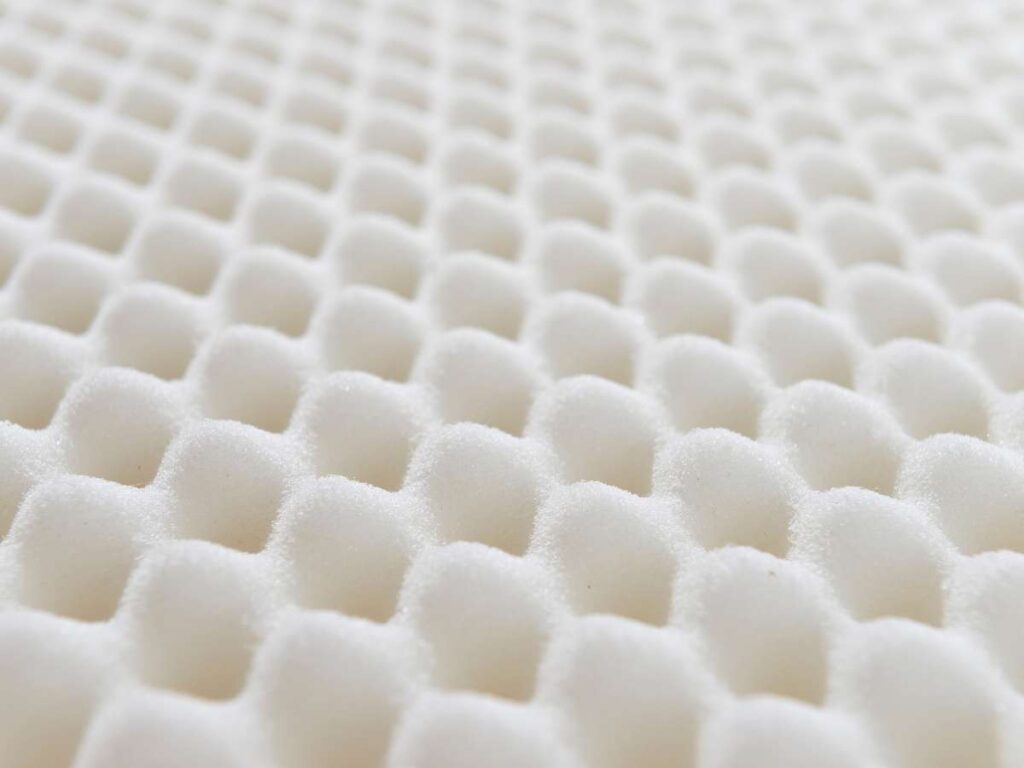
Conclusion
Choosing the right materials for your sports shoes can be challenging, especially when balancing quality, design, and order requirements. Each material, from mesh to engineered mesh and synthetic leather, has its unique strengths, making it essential to select the right one for your needs. At XDS, we work with a variety of these materials to help you create shoes that meet both market demands and customer expectations.
We hope this guide to upper materials has given you valuable insights to enhance your footwear offerings. If you want to customize your shoe business but are concerned about high MOQ requirements, we offer low and flexible options starting at just 500 pairs for some styles. Contact us today to bring your vision to life!
Explore Related Resources
We’ve got more for you! These articles provide more tips and guidance to keep you on track:
Still haven’t found what you’re looking for? Don’t hesitate to contact us; we’re available around the clock to assist you.
Quick Quote
Fill out the form, get the quote in hours!
